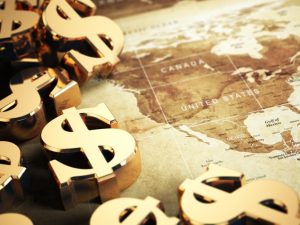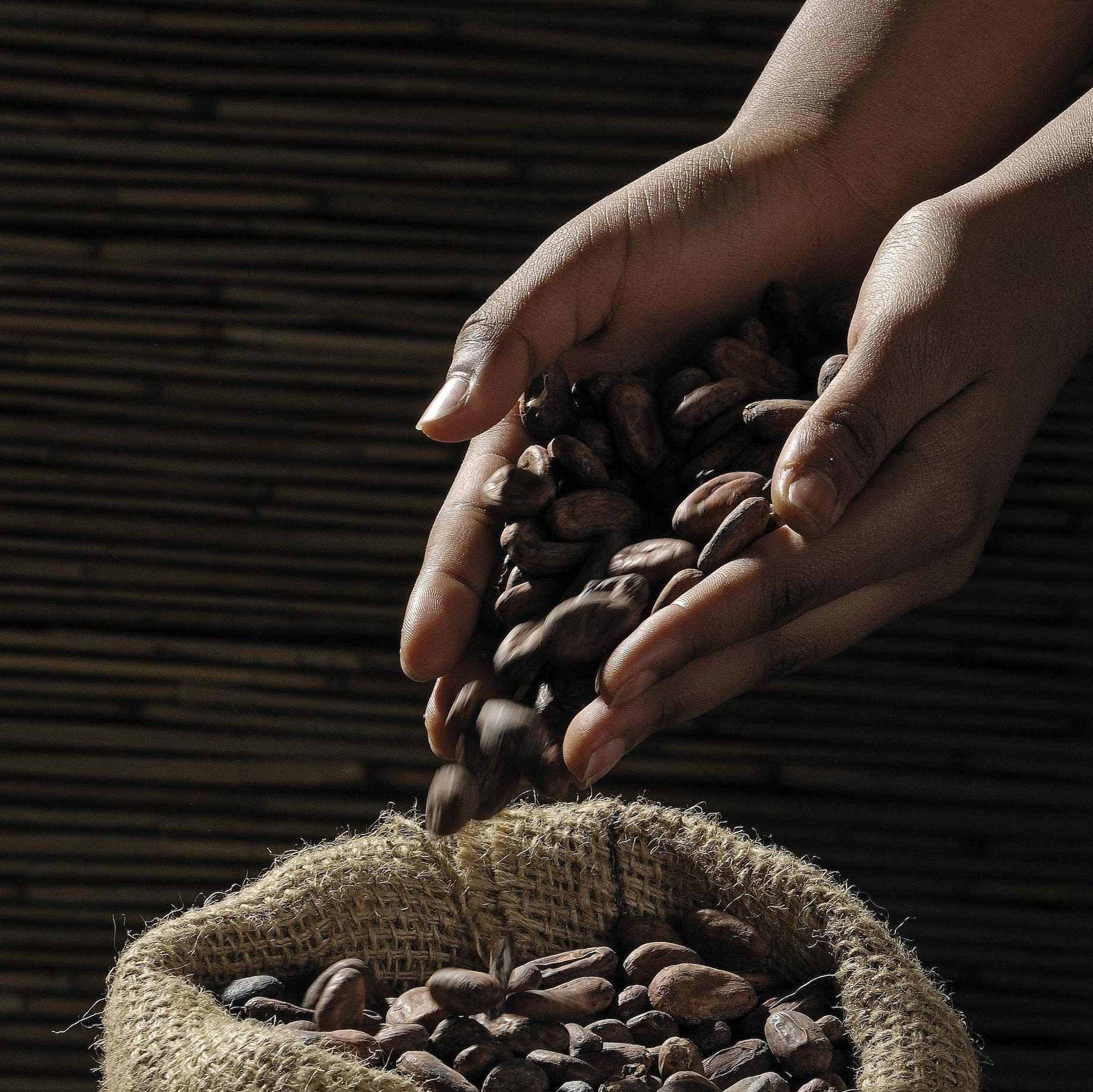DOLLAR RISES AFTER TRUMP ANNOUNCES JAPAN, SOUTH KOREA TARIFFS
The dollar rose sharply against other major currencies on Monday, after U.S. President Donald Trump announced new tariffs set to go into effect August 1 for a spate of countries including Japan and South Korea. Trump posted letters to the leaders of several countries on his social media platform, saying that he would impose tariffs of 25% on Japan and South Korea. He also sent letters to the leaders of Malaysia, Kazakhstan, Myanmar, South Africa and Laos, all of which outlined tariffs close to the levels previously announced for each country in April. The dollar’s rise was most pronounced against the yen and was last up 1.09% at 146.130. The dollar was up 0.38% to 0.798 against the Swiss franc on Monday. “There were some country-specific things that were already putting some of these currencies on the back foot,” said Brad Bechtel, global head of FX at Jefferies. “But clearly, the news this morning out of the U.S. with Trump and the tariffs is definitely hitting currencies other than the dollar, for a change.” The euro slipped 0.57% to $1.172 having rallied over 13% so far this year. Investors are concerned that Brussels might not be able to secure deals with Washington ahead of the deadline as progress on agreements with the European Union has been slow, despite multiple rounds of negotiations. Most U.S. trade partners face the prospect of steeper duties at the end of the 90-day moratorium on U.S. President Donald Trump’s “Liberation Day” reciprocal tariffs on Wednesday. Trump has also threatened an additional 10% tariff on nations aligning with what he deemed to be the “anti-American” policies of the BRICS emerging economies. The dollar index, which measures the currency against six major counterparts, rose 0.517% to 97.467, reaching a one-week high. The index extended gains from last week when data reflecting labour market resilience pushed back expectations for imminent monetary policy easing by the Federal Reserve. Still, the index is close to a 3-1/2-year trough and has declined 10% so far this year as investors questioned the safe-haven status of the U.S. currency and reassessed earlier expectations that the U.S. could be spared in the event of a global economic slowdown. Sterling weakened 0.26% to $1.362 but stayed near its strongest level since October 2021. Currencies positively correlated to risk appetite, such as the Aussie dollar and the New Zealand dollar lost 0.79% and 0.74%, respectively ahead of monetary policy decisions in both countries in the coming two days. The Reserve Bank of Australia is widely expected to cut the cash rate by another quarter point on Tuesday, while New Zealand’s central bank is predicted to hold rates steady on Wednesday. U.S. policy uncertainty weighing on the dollar “may not be as potent as in early April, but we think this correlation still matters,” Paul Mackel, global head of FX research at HSBC said.

STERLING GAINS BROADLY AS TRUMP UNVEILS TARIFF SPECIFICS
The pound rose on Tuesday, gaining against the likes of the yen after the U.S. announced 25% tariffs on imports from Japan and South Korea, as investors gravitated towards markets that are at less risk of being hit by hefty duties. U.S. President Donald Trump on Monday wrote to 14 countries, from major suppliers like Japan and South Korea to minor trade players, warning they face sharply higher tariffs from a new deadline of August 1 unless they strike fresh trade deals. Sterling rose 0.3% to $1.3645, bringing gains for the year so far to 9.1% as it heads for its strongest yearly performance against the dollar since 2017. Against the yen the pound was up 0.3% at nearly 199.14 yen, around its highest since last November. The Korean won rose by 0.35% to 1,863 to the pound, recovering from the previous day’s selloff. Britain is the only major economy so far with a U.S. trade deal in the bag, albeit limited in scope, which means the focus for investors is squarely on the UK’s economic and fiscal backdrop. The pound and UK government bonds have regained some stability from last week’s aggressive sell-off but have not managed to recover those losses. Investors hit sterling and gilts hard on July 2, when the government ditched key parts of a major reform to welfare benefits that puts finance minister Rachel Reeves at risk of breaking her own borrowing rules. “Our view remains negative on the growth and fiscal picture in the UK,” Jefferies strategist Mohit Kumar said. “The government will have no choice but to increase taxes, but we (are) reaching a point where further tax rises can be counterproductive,” he said. In its annual report on fiscal risks and sustainability, the Office for Budget Responsibility said on Tuesday the British government deficit stood at 5.7% of gross domestic product at the end of last year – around 4 percentage points above the average among advanced economies. With 10-year gilt yields around 4.5% right now, the UK has the third-highest borrowing costs of any developed economy, behind only New Zealand and Iceland, the OBR said.
STERLING STEADY AS INVESTORS WEIGH BOE’S FINANCIAL STABILITY REPORT, TARIFF UNCERTAINTY
Sterling was little changed on Wednesday, as investors digested the Bank of England’s half-yearly report on financial stability and assessed the potential impact of trade disputes on global economic growth. The pound was little changed against the U.S. dollar and was last at $1.35, while against the euro it firmed 0.17% to 86.14 pence. Sentiment globally was one of caution after U.S. President Donald Trump widened his trade war by saying he would impose a 50% duty on imported copper and unveil levies on semiconductors and pharmaceuticals. Trump said there would be announcements on Wednesday regarding “a minimum of 7 countries having to do with trade,” a day after he told 14 nations that they would face sharply higher tariffs from a new deadline of August 1. The pound has been among the top beneficiaries from a selloff in the U.S. dollar on expectations that a global trade war could also hurt the U.S. economy. The UK was also the first economy that signed a trade deal with the U.S., making it less likely to face fresh tariffs, according to analysts. However, market participants were taken aback after last week’s UK welfare bill raised expectations that the government is faced with either increasing borrowing or imposing growth-denting taxes to balance public accounts at its Autumn budget. “Nearer term, the UK government has got itself into a fiscal mess,” said Derek Halpenny, head of research, global markets EMEA & international securities at MUFG. “Without a credible big step measure, a credibility gap will persist and risk further dangerous market disruptions. Sharp Gilt selloffs, like recently, will be pound negative and potentially very disruptive.” The pound has gained nearly 9% against the dollar this year and is on track for its biggest annual rise since 2017. However, fiscal worries have limited gains recently and the currency is down more than 1.4% from a 2021 high it hit earlier in the month. Meanwhile, the Bank of England released its half-yearly assessment of threats to financial stability, where it flagged that risks to financial markets remain high against the backdrop of U.S. tariffs. Policymakers also loosened the cap on lending to riskier borrowers after a call by the government for regulators to look for ways to encourage economic growth, without risking the stability of the financial system.

DOLLAR STABLE, BRAZILIAN REAL SLIDES ON TARIFF THREAT; BITCOIN NEAR RECORD HIGH
The U.S. dollar was steady on Thursday after retreating from a two-week high versus major peers, as markets took U.S. President Donald Trump’s latest tariff salvos in their stride, except in Brazil where a threatened 50% levy sent the real sliding. The dollar had been knocked back by a sharp decline in U.S. Treasury yields after a 10-year note auction on Wednesday garnered strong demand, tempering worries about the “Sell America” narrative that saw Treasuries, the dollar and Wall Street stocks all sold off earlier this year. Francesco Pesole, FX strategist at ING, said that markets were still digesting the latest tariff surprises, but that there was hesitancy around trying to second-guess Trump’s next move. “I think the general consensus remains that he will not hit China with new tariffs and that he will be able to agree to some deal with the EU,” said Pesole. Overall, investors were hungry for riskier assets, with the most damaging tariff scenarios looking increasingly unlikely. That helped Nvidia to become the first stock ever with a $4 trillion valuation, and lifted cryptocurrency bitcoin to an all-time peak just shy of $112,000. Optimism was also buoyed by minutes of the Federal Reserve’s last meeting, with most policymakers of the opinion that interest rate cuts would be appropriate later this year. The dollar index, which measures the currency against six major peers, was a fraction higher at 97.533, finding a floor following a 0.2% decline on Wednesday, the same day that it pushed to the highest since June 25 at 97.837 before losing momentum. The euro fell 0.1% to $1.1712 on Thursday, while sterling fell 0.1% to $1.358. Against typical safe-haven currencies, the dollar held steady at 146.26 yen and strengthened 0.17% to 0.79545 Swiss francs. With the exception of Brazil, Trump’s latest batch of letters to trade partners contained tariff rates close to those already proposed in his original “Liberation Day” announcement on April 2, as was the case with other letters this week. Trump has also left the door open to extensions beyond the new August 1 deadline if countries make compelling proposals. Brazil had originally been slated for just the baseline 10% levy, but Trump cited not just trade practices but the treatment of its former president, Jair Bolsonaro. Bolsonaro, who was friendly with Trump when they were both in office, is on trial on charges of plotting a coup to stop current President Luiz Inacio Lula da Silva from taking office in January 2023. The real dropped as much as 2.8% overnight to hit 5.6047 per dollar for the first time since June 6 and was last changing hands at 5.5826 per dollar. “…the reasons are clearly politically motivated. Brazil is one of the very few countries with a trade deficit with the U.S.,” said Michael Pfister, FX analyst at Commerzbank. “It’s worrying not only for the Brazilian real but also for the U.S. dollar, you can’t be sure which country might be next,” he said. Trump and other officials have said several times lately that a deal with India is close, while the European Union is also edging toward a framework agreement. The latest inflation data out of Norway showed June core inflation slightly higher than expected. Norway’s crown traded down 0.2% against the euro at 11.79 and was down 0.3% against the dollar at 10.067. Bitcoin was up 0.4% at around $111,168, just below the all-time high hit overnight of $111,988.90. “The new record high came on improved risk sentiment,” IG analyst Tony Sycamore wrote in a note to clients. “While the push to new highs hasn’t yet sparked the fireworks the market might have been hoping for, there is scope for bitcoin to make further gains towards $120,000.

STERLING SLIPS AS WEAK GROWTH DATA FUELS RATE CUT EXPECTATIONS
Sterling slipped on Friday and was trading close to a more than two-week low after data showed the UK economy contracted for the second month, boosting expectations that the Bank of England could lower borrowing costs next month. Gross domestic product shrank by 0.1% after a 0.3% drop in April, the Office for National Statistics said, primarily dragged by weakness in industrial and construction output. “Though it would be wrong to conclude from the GDP data alone that the economy is coming under greater pressure, there are genuine questions emanating from the jobs market and whether it is beginning to fall apart more quickly,” said James Smith, an economist at ING. “For the (BoE), it would likely force a rethink on the pace of rate cuts. Until now, officials have appeared highly reluctant to move beyond their recent, gradual once-per-quarter cutting pace.” The pound weakened 0.26% to $1.354, while against the euro it slipped 0.2% to 86.35 pence. Yields on short-term gilts, often a reflection of interest rate expectations, were steady after easing about two basis points earlier in the day. Traders are now pricing in a 78.3% chance the BoE could deliver a 25-basis-point interest rate cut in August, versus the 64% probability they were pricing in two weeks ago, data compiled by LSEG showed. Friday’s data adds to worries for finance minister Rachel Reeves, with economists saying it looks likely she will need to raise taxes again in the upcoming Autumn budget as the government strives to balance its public accounts. UK markets took a beating last week after the Labour government was forced to pass a highly contested welfare bill that did little to make good on the spending cuts initially hoped for and heightened the uncertainty regarding the sustainability of government finances. Globally, investors were rattled by U.S. President Donald Trump’s latest tariff escalation as he said he would impose a 35% rate on Canadian imports next month, while other trading partners are likely to face blanket levies of 15% or 20%. The pound firmed 0.5% against the Canadian dollar and last fetched C$1.855. sAnalysts have said that Britain’s deal with the U.S. has made it less exposed to uncertainty on the trade front, which was also reflected in the pound’s 8% rise against the U.S. dollar so far this year.
- CAPITALDIGEST MARKET REVIEW , 03/11/2025November 3, 2025
- CAPITALDIGEST DAILY NEWS, 03/11/2025November 3, 2025
- CAPITALDIGEST MARKET REVIEW, 22/09/2025September 22, 2025
Enter your email address for receiving valuable newsletters.
- CAPITALDIGEST DAILY NEWS, 03/11/2025NNPCL WEIGHS OVERHAUL, REPURPOSING OPTIONS FOR REFINERIES The Nigerian National Petroleum Company Limited has said...November 3, 2025
- CAPITALDIGEST MARKET REVIEW, 22/09/2025STERLING RISES AGAINST DOLLAR ON FED-BOE POLICY DIVERGENCE Sterling gained against the dollar on Tuesday,...September 22, 2025
- CAPITALDIGEST DAILY NEWS, 22/09/2025OIL REFORMS DRIVE $18.2BN DEALS – FG Nigeria’s oil and gas sector is experiencing a...September 22, 2025












